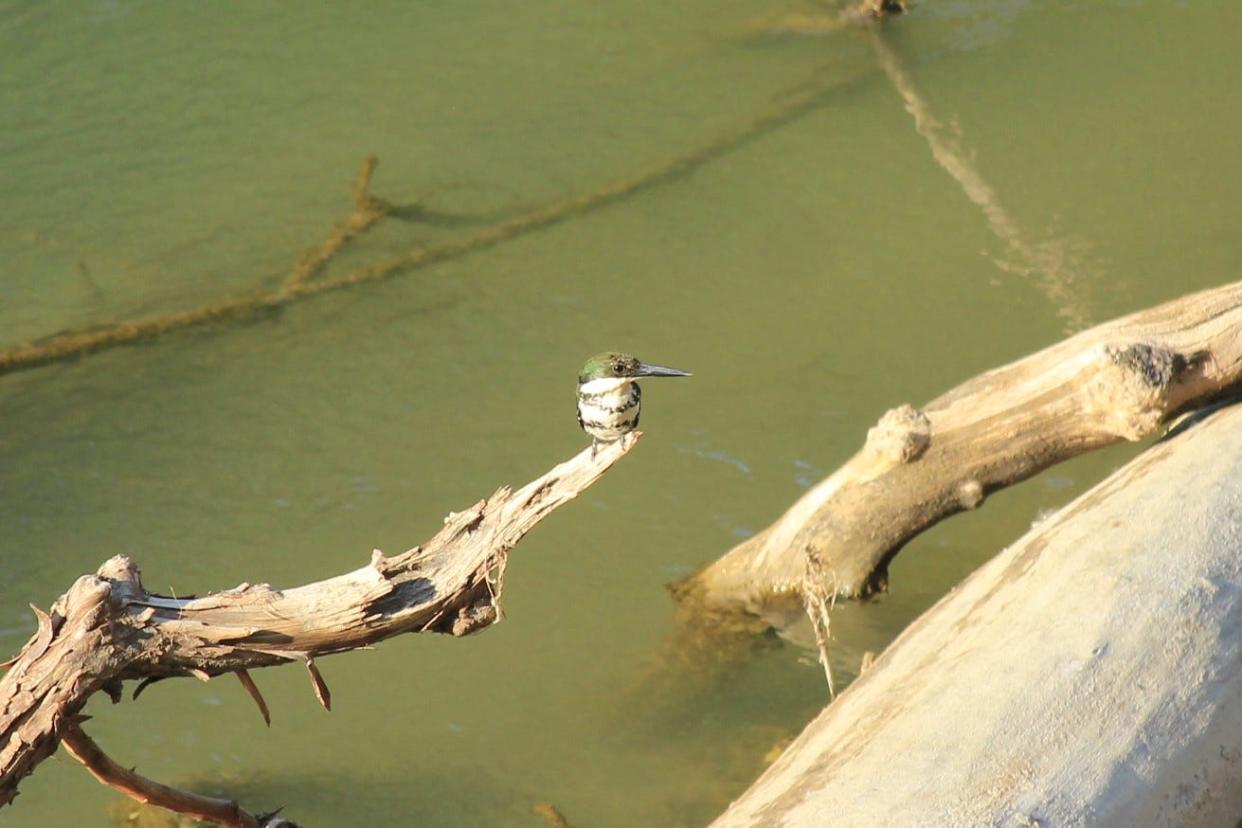Green Kingfishers often an overlooked part of Texas streams

It has been said often and repeatedly that things are bigger in Texas, and when it comes to biological diversity, that saying is undeniably true. Due to its sheer size and therefore many ecoregions, our great state is home to an enormous amount of avian species, many of whom are endemics. One such species is a frequently overlooked species that spends its life along clear streambeds in the Edwards Plateau, and that race is the Green Kingfisher.
The Green Kingfisher (Chloroceryle americana) has a small range within the borders of the United States. In fact, aside from a very disjunct and trivial population in southern Arizona, the only state that this species can be seen in is Texas, where it can be observed from the Concho Valley eastward to the Austin area then southward outside of the border deep into Mexico. Like other species of Kingfishers, it prefers to inhabit bodies of freshwater. However, unlike other species of Kingfishers, this variety seems to prefer shallow flowing streams rather than large bodies of water such as lakes and ponds.
More often than not, this species is heard before it is viewed. The vocal sounds it makes are a harsh tick, tick followed by a short rattling sound. Once in view, however, there is no mistaking this species for any other bird. It is rather small in stature with a body length of less than nine inches and a wingspan of just over one foot. As the common name alludes to, this bird is primarily green on the upperparts and head, save for a conspicuous white collar around the neck and white speckles on the wings and tail. The underparts are white, and males have a large rusty band on the chest. Both sexes have an elongated, thick black bill that makes the head appear disproportionately large.
Unlike its close relatives who spend time “hanging out” on high-wires and trees along waterways, this small fishing bird prefers to remain low next to the water, either on branches or rocks. It feeds primarily on fish but will occasionally consume small frogs as well. It does not engage in the well-known behavior of hovering several feet above the water and diving down to ambush its prey like the Belted Kingfisher. Rather, this species plunges directly into the water from the rocks or branches that it hunts from.
For most of the year, this species of bird is quite solitary. However, during the breeding season, females will select a mate and they remain in a monogamous relationship throughout the rearing season. The pair work together to build the unique nest along the banks of the shoreline in a horizontal burrow that is usually two to three feet deep. While this nest typically has no lining of which to speak, it can often be observed rather easily by the debris of undigested fish scales and bones located at the entrance to the burrow. The white eggs, which number from three to six, are small (1 inch by 1 inch) and are laid once a year. Both parents tend to the eggs for the 19-day incubation period. The young stay in the nest and are fed by both parents up to another month before they leave the nest to fend for themselves.
With such a specialized habitat, this avian species is subject to negative population trends with pollution and loss of habitat ranking as the top two reasons. However, at the present time the population seems to be fairly stable and increasing in areas of Texas as folks continue to be good stewards of riparian habitats.
Michael Price is owner of Wild About Texas, an educational company that specializes in venomous animal safety training, environmental consultations and ecotourism. Contact him at wildabouttexas@gmail.com.
This article originally appeared on San Angelo Standard-Times: Green Kingfishers often an overlooked part of Texas streams

